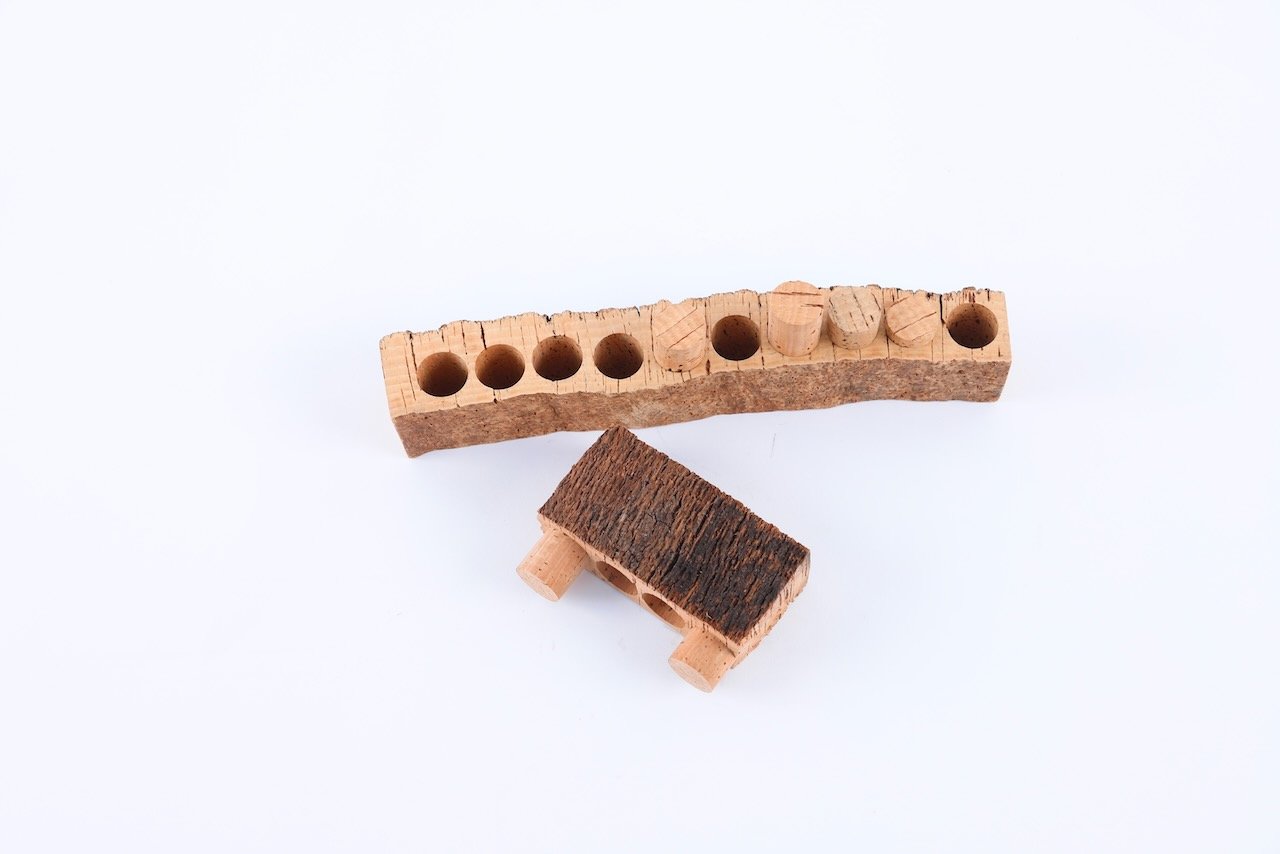Cork Production and Industry: Eliminating Concepts of Waste
For centuries, the cork forests of southeastern Portugal have underpinned the socio-economic health of the region. Integrated with local viniculture, cork trees produce stoppers for the global wine industry. There is an equally long history of material recycling in the cork regions. To this day, the “waste” of stopper production is recycled into industrial material used in disciplines from architecture to aerospace.
The primary economic driver of the cork industry is the production of bottle stoppers, which represent 70 percent of the economic return on the material, but utilize only 30 percent of the material itself. This difference lays the foundation for a true, zero-waste, circular manufacturing system. Within the manufacturing sectors of the cork industry, in the making of products from stoppers to flooring to architectural building materials, all material has use.
Perhaps it is unique that a profitable product utilizes only a small portion of the material produced by the source. It may be that effective circularity is predicated on an abundance of “unwanted” material, or material from which the primary value generator has already been extracted. This is the beauty of value-adding- the notion that a material can produce sustainable economic and social profit from its primary application, and what remains is still full of potential for additional profit.
It might also be the case that abundance of “unwanted” material exists in inverse proportion to the imagination needed to generate new value. When one sees the remnants of cork stopper production, the material one sees is clearly something brimming with nascent value. Not all leftovers are this way. The vast majority of what is considered “waste” within industrial cycles certainly does not vibrate with potential for rebirth. However, that doesn’t mean the untapped value isn’t there - it just demands more design imagination to put it to use.
In the cork product manufacturing facilities, it is not uncommon to see mountains of material, dozens of meters high, that is unsuitable for bottle stopper production. While the production of bottle stoppers accounts for the majority of revenue produced by cork trees, only a fraction of the material yield is actually converted to product. Sheltered beneath the roofs of hangar-like warehouses, summits of materials in various forms rise around the visitor. This landscape of circular potential is a jumble of form, color, texture and smell. Rising dozens of meters into the space are jumbled heaps of bark from young trees, forest prunings, spent corks recovered from wineries, strips and sheets and offcuts from flooring production, dusty nuggets, and even chunks of decades-old cork insulation from demolished buildings.
All of this material is prized for the potential it has for reincarnation, its power to become new product. In the cork factory, material death is virtually non-existent. Instead, new life, new value and new application waits just beyond the horizon. What’s left behind from the process of forest care may end up as a building unit for a new house, or a piece of furniture, or a simple dish. The possibilities of regeneration are seemingly endless.
Even the material that is too fine to be re-formed into a new application, such as dust extracted from the manufacturing process itself, is used as biofuel to power the factories themselves. The cork factories I visited are powered between 60 and 95 percent by burning cork biomass, which does not release new carbon into the atmosphere.
The circles of care, regeneration and value-adding within the industry of cork mimic the cycles of natural value and production. As Wendell Berry describes it:
“All bodies, plant and animal and human, are joined in a kind of energy community.. They are indissolubly linked in complex patterns of energy exchange. They die into each other’s life, live into each other’s death. They do not consume in the sense of ‘using up’. They do not product waste. What they take in, they change.”
The circularity of the cork manufacturing systems represents a model from which other material and product systems might learn. It is a system of repeated value generation that mirrors the endless energy (value) cycles of the cork forest itself, and all systems of life. The cork factories are sites in which materials for products and construction are created. But in their structure as repositories of energy and value circulation, these facilities offer clues to true decarbonization urgently needed within the production systems of the built environment.








